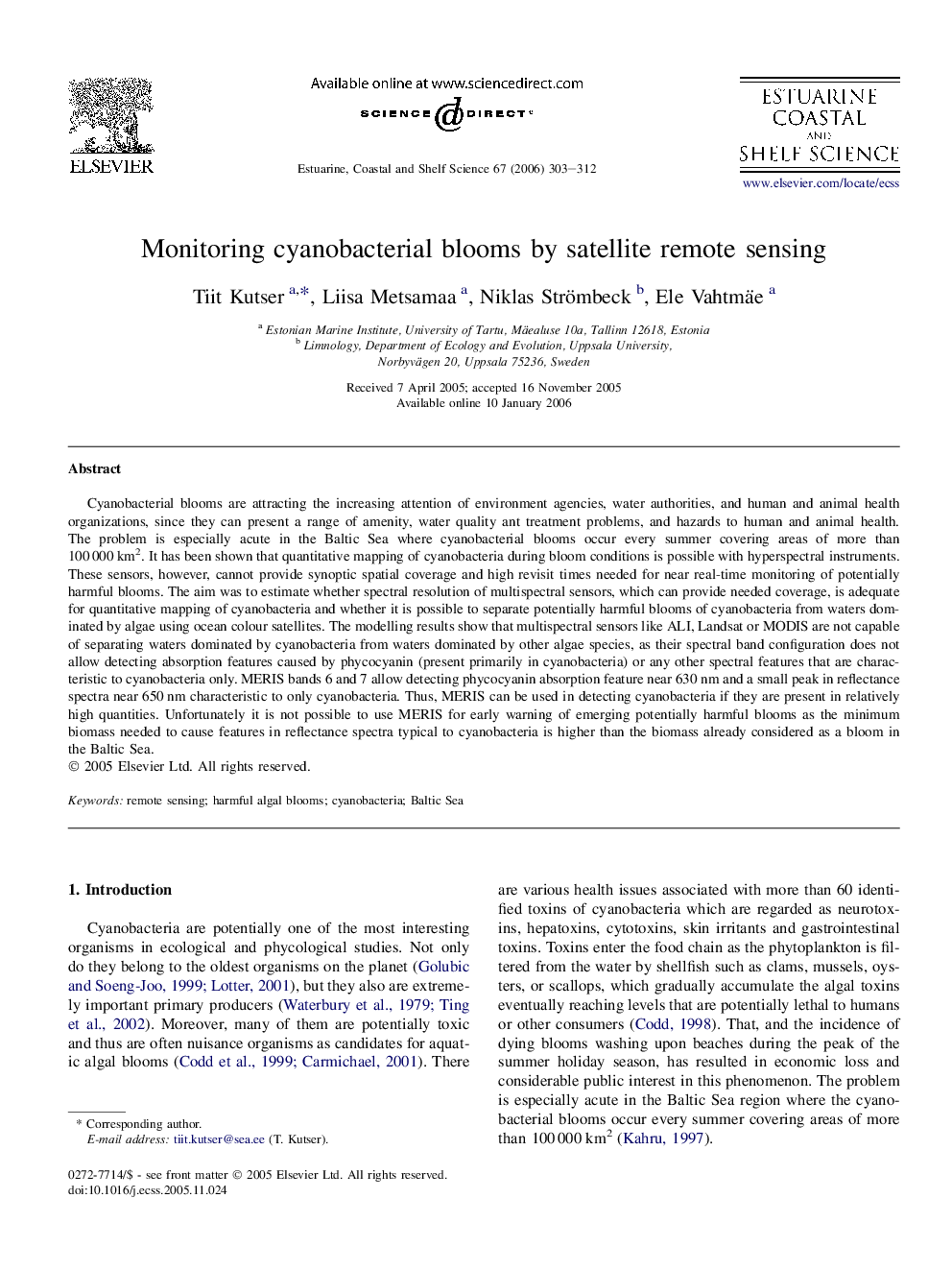| کد مقاله | کد نشریه | سال انتشار | مقاله انگلیسی | نسخه تمام متن |
|---|---|---|---|---|
| 4542339 | 1626714 | 2006 | 10 صفحه PDF | دانلود رایگان |

Cyanobacterial blooms are attracting the increasing attention of environment agencies, water authorities, and human and animal health organizations, since they can present a range of amenity, water quality ant treatment problems, and hazards to human and animal health. The problem is especially acute in the Baltic Sea where cyanobacterial blooms occur every summer covering areas of more than 100 000 km2. It has been shown that quantitative mapping of cyanobacteria during bloom conditions is possible with hyperspectral instruments. These sensors, however, cannot provide synoptic spatial coverage and high revisit times needed for near real-time monitoring of potentially harmful blooms. The aim was to estimate whether spectral resolution of multispectral sensors, which can provide needed coverage, is adequate for quantitative mapping of cyanobacteria and whether it is possible to separate potentially harmful blooms of cyanobacteria from waters dominated by algae using ocean colour satellites. The modelling results show that multispectral sensors like ALI, Landsat or MODIS are not capable of separating waters dominated by cyanobacteria from waters dominated by other algae species, as their spectral band configuration does not allow detecting absorption features caused by phycocyanin (present primarily in cyanobacteria) or any other spectral features that are characteristic to cyanobacteria only. MERIS bands 6 and 7 allow detecting phycocyanin absorption feature near 630 nm and a small peak in reflectance spectra near 650 nm characteristic to only cyanobacteria. Thus, MERIS can be used in detecting cyanobacteria if they are present in relatively high quantities. Unfortunately it is not possible to use MERIS for early warning of emerging potentially harmful blooms as the minimum biomass needed to cause features in reflectance spectra typical to cyanobacteria is higher than the biomass already considered as a bloom in the Baltic Sea.
Journal: Estuarine, Coastal and Shelf Science - Volume 67, Issues 1–2, March 2006, Pages 303–312